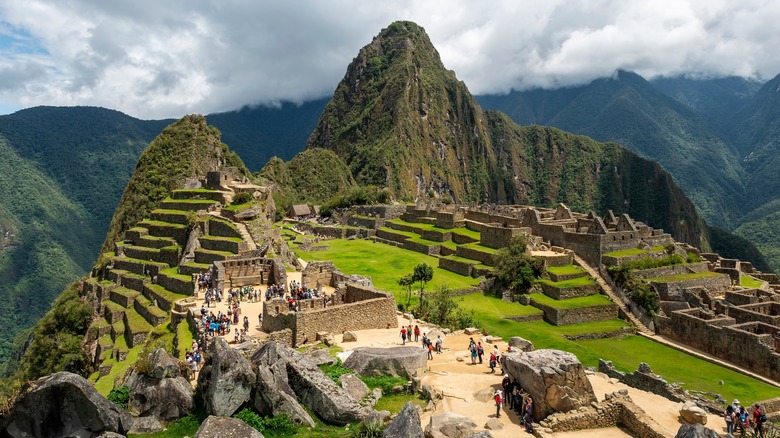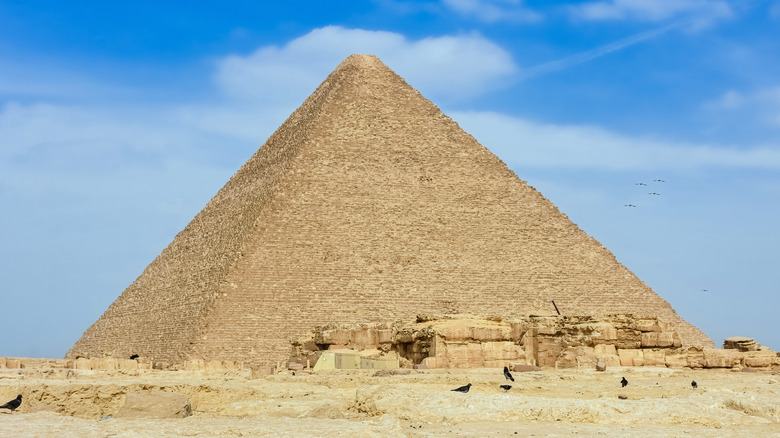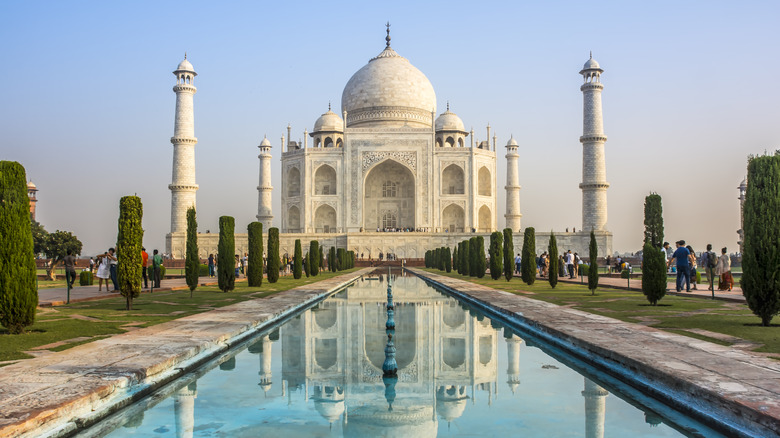Here's Why There Are Only 7 Wonders Of The World
Though the world is filled with countless wonders, only seven of them are officially crowned as the Wonders of the World. Composed of architecturally and historically significant marvels, the sacred list actually has two versions: The Seven Wonders of the Ancient World and the Seven Wonders of the New World. While there's no crossover between the two lists — and a majority of the artifacts on the ancient list are no longer standing — the one thing they have in common is the number of wonders they recognize. So, why only seven?
The number seven is everywhere. There are seven days in a week, seven continents on the planet, seven notes in most traditional Western musical scales, seven colors in a rainbow, and seven deadly sins in the Christian faith. Indeed, "7" is widely considered a lucky number, possessing symbolic significance in spirituality, mythology, astrology, and numerology. From a numerological standpoint, Astrotalk points out that "7" is a prime number that can be broken down into numbers "3" and "4," which represent creativity and practicality, respectively. While the symbolism and lore behind the mystical number is endless, the reason why there are only seven world wonders is fairly simple: The number "7" represents perfection, mirroring the five known planets in existence when the list was created, plus the sun and the moon.
The Seven Wonders of the Ancient World
Chosen by Hellenic travelers, the Seven Wonders of the Ancient World trace back to 225 B.C. when they were documented in a work by Philo of Byzantium titled "On the Seven Wonders." During this time, it was believed that only seven celestial bodies existed beyond Earth: Mercury, Venus, Mars, Jupiter, Saturn, the sun, and the moon. These ultimately corresponded with the days of the week and the wonders of the world. Today, there are eight known planets in our solar system in addition to the sun and the moon, and yet there are still just seven world wonders.
Since the Great Pyramid of Giza is the only original world wonder that remains standing today, the list has since been revised. Dating back to 2560 B.C., the grand stone structure, also known as Khufu, isn't Egypt's oldest pyramid. However, towering just over 480 feet when it was built (now standing 30 feet shorter due to erosion and human destruction), it reigns as the tallest of its kind on the planet, per Guinness World Records. Even so, the impressive pyramid didn't make it onto the Seven Wonders of the New World list, nor did the other six structures, which have since been erased from existence.
The other ancient wonders were: the Hanging Gardens of Babylon, the Statue of Zeus of Olympia, the Temple of Artemis of Ephesus, the Mausoleum of Halicarnassus, the Colossus of Rhodes, and the Lighthouse of Alexandria. Though they no longer physically exist, their legacy is immortalized in poems, paintings, and other ancient artistic works.
The Seven Wonders of the New World
With a majority of the ancient world wonders lost to time, a new list was in order. In 2000, a Swiss foundation launched a campaign to determine the official new landmarks. After over 100 million votes were cast, the final results were announced in 2007, omitting the Great Pyramid of Giza and adding seven new monuments and locations to the list of marvels. The current list is composed of: The Great Wall of China, Chichén Itzá in Mexico, Petra in ancient day Jordan, Machu Picchu in Peru, Christ the Redeemer in Brazil, The Colosseum in Rome, and the Taj Mahal in India.
Beyond the Seven Wonders of the New World, additional lists have been created to celebrate Earth's many marvels. For example, there are the Seven Wonders of the Natural World (which features the Grand Canyon and Mount Everest among its honorees), the Seven Wonder Cities of the World, and the Seven Underwater Wonders of the World. But the one thing they have in common is lucky number seven.


